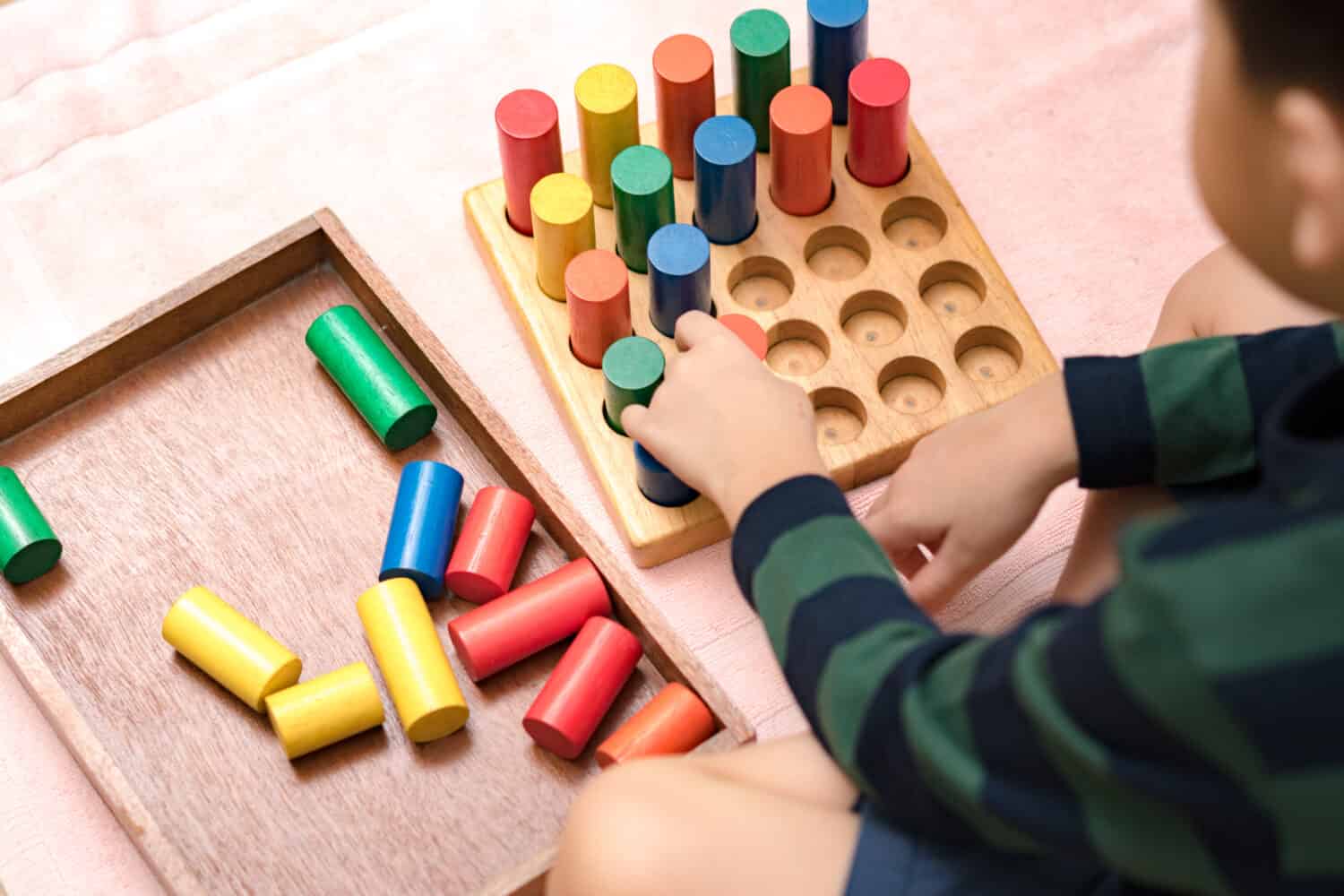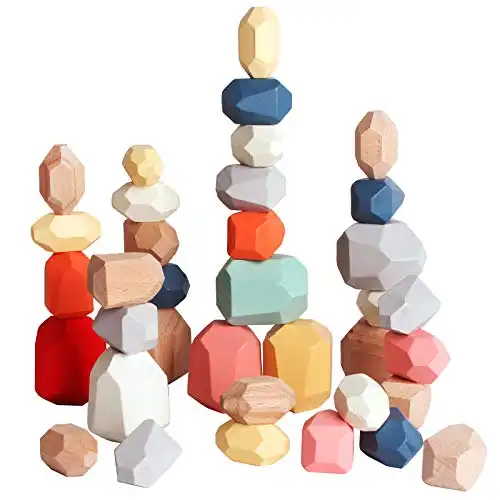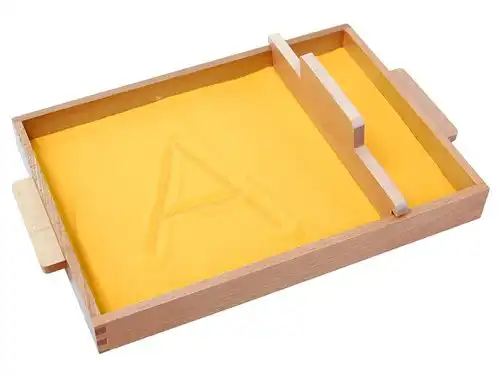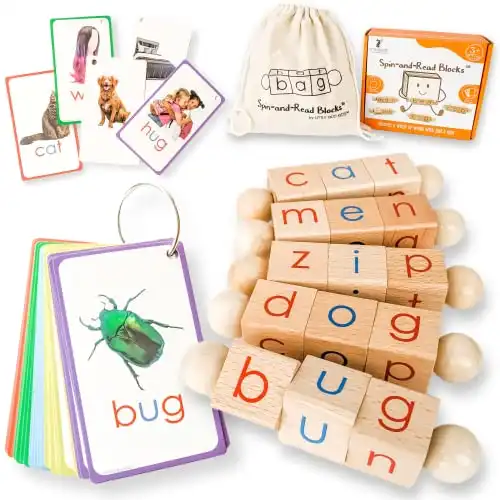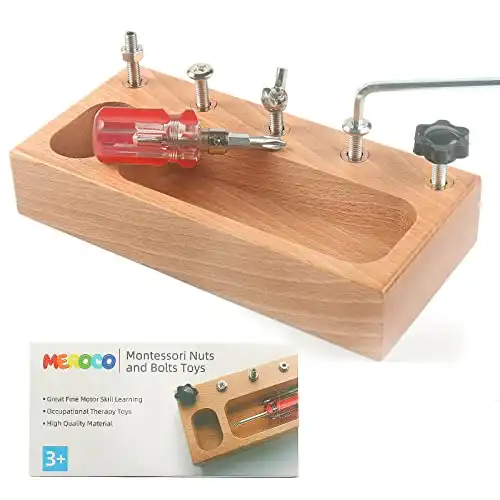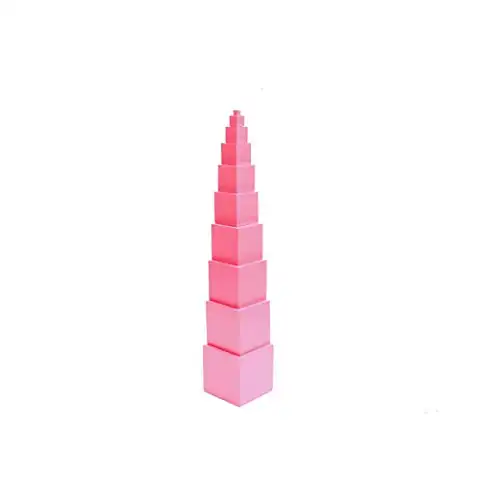Are you looking to find the best Montessori materials that inspire creativity in your child? Or perhaps you're homeschooling or building a classroom that you desire to follow the Montessori method of learning. If you'd like to introduce your kids to new activities and inspire them to play creatively, Montessori materials can be a fun investment and are often part of the Montessori curriculum.
Montessori materials give your child a hands-on experience when it comes to learning. These items go beyond simple flashcards and are great for both the classroom and home use. They do more than simply entertain, they give children a chance to develop and explore by following the Montessori educational method.
If you're looking to purchase specific Montessori materials that promote creativity, you may have lots of questions. What are the benefits of these materials and how are they different from other items on the market? Let's take a closer look at the 5 best Montessori materials you can buy that promote creativity in children.
What is the Montessori Method?
If you're new to the Montessori method of education and lifestyle, you may be wondering how materials fit into the equation. The Montessori method was created by Dr. Maria Montesori, an Italian physician and educator who lived in Rome in the late 1890s. The goal of Montessori education and lifestyle is to focus on giving children a sense of independence and choice.
Many Montessori schools exist around the country and feature mixed-aged classrooms, collaborative play, and hands-on learning. Montessori schools don't create their curriculum based on standardized testing. Instead, teachers and classrooms guide individual students, and children are evaluated on their own level of learning.
Children in Montessori environments become self-directed learners. They don't wait for a parent to push them to learn a new skill. Instead, they learn when they are ready, just like when they learn to walk or crawl. Montessori schools and home environments inspire freedom and creativity.
What Sets Montessori Materials Apart?
When you read the words “Montessori materials,” you may be wondering what they are and how they're different from other items found in schools or at home. Essentially, the goal of Montessori materials is to give children the opportunity to uncover important learning outcomes through repetition and practice.
These materials are often simple and easy to use and are part of the Montessori curriculum. They also focus on teaching only one skill at a time. Once a child has learned that skill through repetition and practice, he or she moves on to the next skill. In Montessori education, a trained educator will present these materials to children in a sequence from easiest to hardest, based on their own developmental needs and interests.
While Montessori materials are not necessary when implementing the method at home, in a Montessori environment, children are seen as naturally creative, and specific materials can help them cultivate their initiative-driven nature. The focus of Montessori materials is to build a love of learning and inspire creativity in a child, whether at home or at school.
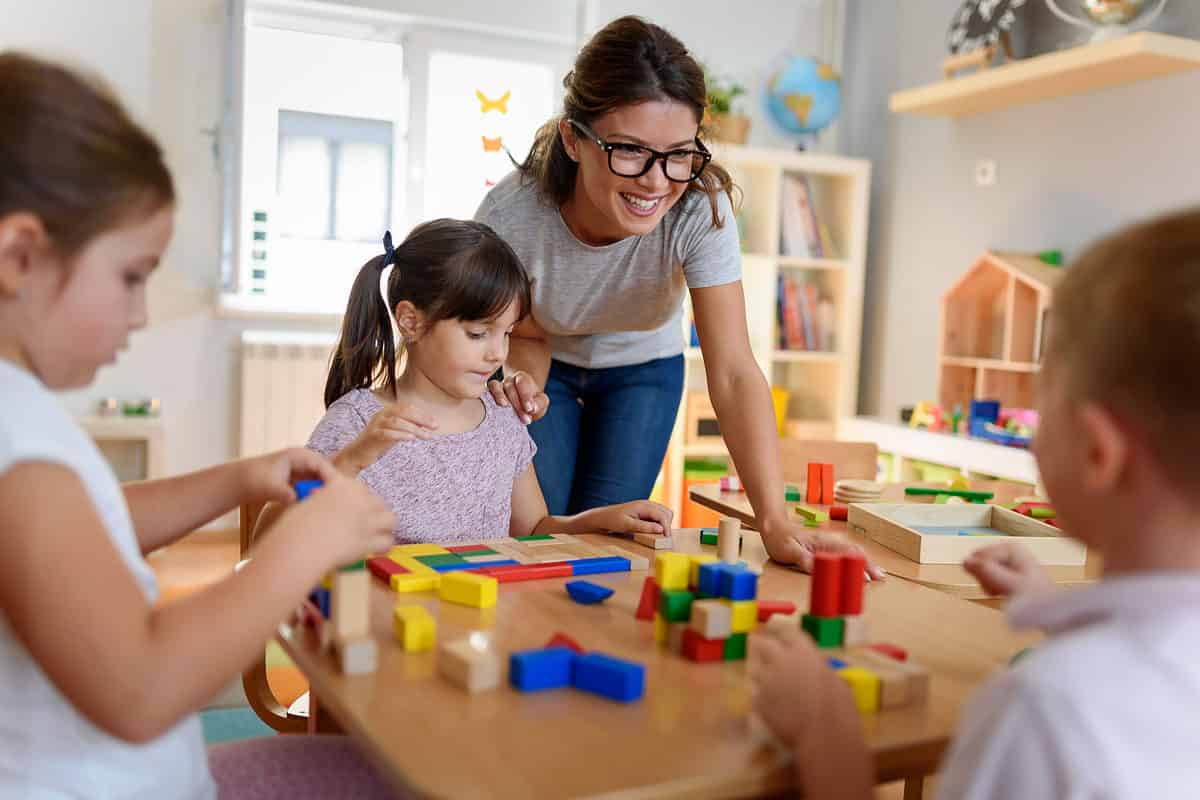
©Lordn/Shutterstock.com
Benefits of Montessori Materials for Sparking Creativity
As mentioned, Montessori materials are different in that they promote creativity, problem-solving, and independent learning. When choosing to incorporate Montessori materials in your home environment or classroom, children will benefit from the simple, easy-to-use, and creative nature of the materials.
Here are a few other benefits of using Montessori materials:
- Promotes hands-on learning.
- Children can see their own mistakes and learn problem-solving skills.
- One key skill is learned at a time, giving children the chance to master one skill before learning a new one.
- Helps to develop fine motor skills.
- Designed to be used independently, without the help of an adult.
Categories of Montessori Materials
In the Montessori curriculum, there are a vast number of materials that can be used. While these items are often broken down by age or developmental need, they are also categorized as well. The purposeful nature of the materials targets a particular developmental need or academic concept, which is why each item falls into a specific category.
Montessori materials are generally broken down into the following categories:
- Sensorial tools which teach children to touch and feel the world around them.
- Language materials that give a hands-on approach to reading and writing.
- Mathematical materials that promote engagement.
- Geography and science materials that showcase culture with hands-on materials.
- Practical life materials like buttoning and tying shoelaces which give children a chance to learn everyday tasks.
It's important to note that depending on age and development level, some of these materials may cross over from one category to another. But there are plenty of materials to choose from, no matter what concept you're implementing at home or in the classroom.
What to Look for When Buying Montessori Materials
While there are some popular Montessori materials that are often included in classrooms and home environments, you don't have to purchase the most expensive or popular items. When searching for what to buy, remember your Montessori values and choose items that align with those values.
Here are a few other questions you can ask yourself before making a purchase:
- Are the materials constructed from a natural source like wood or real-life objects?
- Do the materials promote hands-on learning?
- Do they teach one skill at a time?
- Do they help children learn problem-solving skills?
- Can a child use the materials without adult help?
- Are the materials simple and easy to use?
The 5 Best Montessori Materials for Sparking Creativity
As mentioned, there are a few categories where the typical Montessori material falls into place. Some of them, however, are excellent at sparking creativity. Here are the top 5 Montessori materials you can include in your classroom or at home.
Wooden Stacking Rocks by Bestamtoy
This 36-piece set is perfect for kids ages 2-5. The stacking rocks are made out of wood and finished with safe, water-based paint and smooth corners. With the different sizes and shapes of the stones, kids can work on their fine motor skills, character development, and visual-spatial skills, all while boosting their creative side. With over 4,000 glowing reviews, these stacking rocks are loved for their endless possibilities and the way they inspire kids to think in different ways.
- Encourages cognitive skills and open-ended play.
- Different colors, shapes, and weighted stones.
- Practice balancing rocks in several different ways.
- Hands-on and natural toy encourage fine-motor skills and patience.
Sand Tray
This item is commonly found in Montessori classrooms. With a smooth, sandy surface, children can learn how to trace letters, numbers, and words. Educators and parents alike can select a letter to practice, and then show the child how to use their fingers to make the letter in the sand. Afterward, the child can shake the tray and smooth out the sand with the included leveling device so they're ready to practice again. In this particular model, the yellow sand is included, but a lid is not.
- Includes yellow sand and a leveler tool.
- Encourages children to learn how to write letters and numbers.
- Inspires creativity with a smooth, sand surface.
Spin-and-Read Blocks
This set is perfect for beginning phonics lessons in kiddos ages 3 and up. Educators or children can select a CVS flashcard, and then use the wooden spinning tool to match the letters to the card. This material boosts children's memory and fine motor skills. It's also a screen-free option on road trips, airplanes, and trips to a restaurant. Reviewers love how it inspires young ones to sound out words and how realistic the photos on the flashcards are.
- Encourages memory and fine motor skills.
- Teaches children phonic sounds and reading.
- Great screen-free option on road trips, airplanes, and restaurants.
- Made of wood with smooth edges.
Screwdriver Board
This device is a perfect sensory material for the classroom or at home. With its smaller parts, it's best for children ages 3 and up. The board is sturdy and made from wood material with smooth edges. It's also great for promoting logical thinking, hand-eye coordination, and problem-solving skills. Parents, grandparents, and educators can also work one-on-one with children to practice using the tools on this screwdriver board. The reviews state this product is great for kids' coordination and can easily be brought along in the car or out to eat to keep kids engaged and learning.
- Inspires hands-on learning with real-life tools.
- Encourages fine motor skills and hand-eye coordination.
- Made of wood and stainless steel accessories.
- Great for home, classroom, outdoor, or travel play.
Pink Tower
This pink block set is a staple in many Montessori classrooms. The pink cubes come in different shapes and sizes giving children a chance to develop their visual and spatial skills when stacking them together. These blocks also work to develop a child's fine motor skills and as an introduction to mathematics by illustrating size comparison. The blocks also inspire creativity as children can experiment with stacking them in several different ways. Reviewers say this item is a classroom favorite and is great for children to explore different sizes and weights.
- Blocks inspire visual and spatial skills plus fine motor control.
- Sensory material that's visually appealing and engaging.
- Great introduction to mathematics as children learn about different sizes and measurements.
Final Thoughts
As your child learns and grows, there are many different Montessori materials that can spark creativity along the way. Whether you're looking for materials in the classroom or at home, these 5 items can help your child learn anything from writing to mathematics and phonics. They're also sure to encourage Montessori education as children learn to play independently and creatively.
More Montessori Articles:
- The 5 Best Montessori Climbing Toys for Being Active
- The 5 Best Montessori Toys for Learning and Development
- The 4 Best Montessori Kitchens for Play
- The 5 Best Montessori Learning Towers for Independence
- Where Can You Buy Montessori Toys?
The image featured at the top of this post is ©myboys.me/Shutterstock.com.
